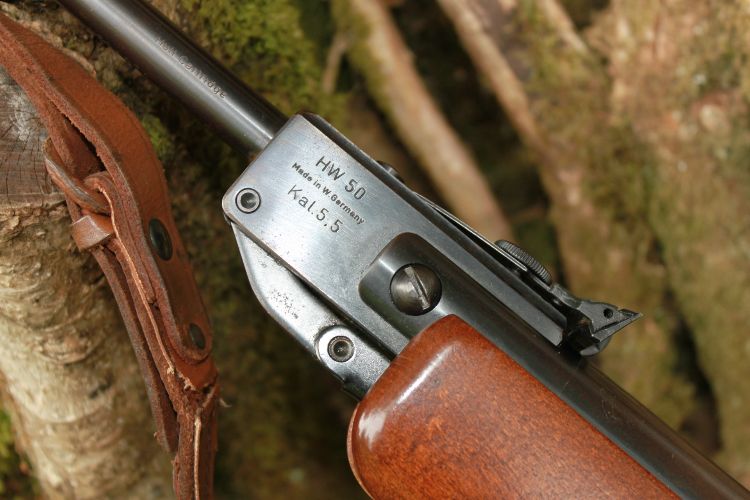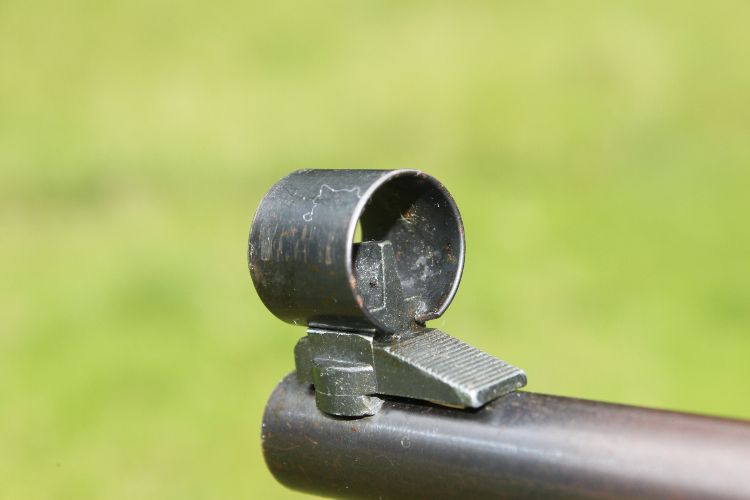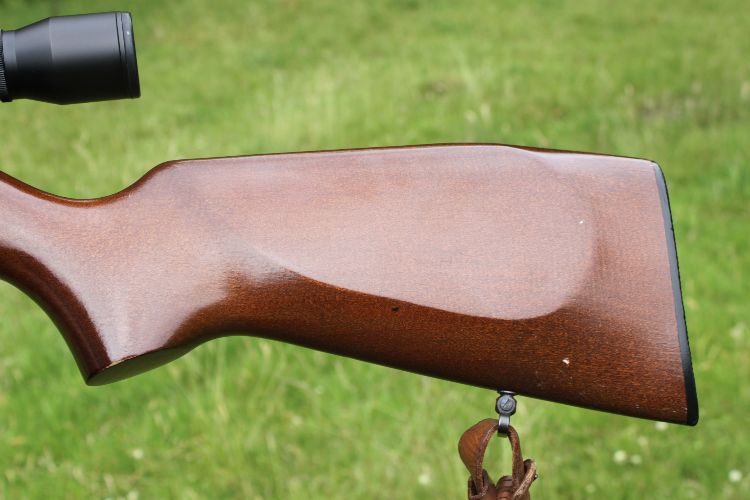Everyone knows Weihrauch make top-quality guns, built like the proverbial outhouse, to last a lifetime and then some, but if there were one criticism levelled at the company in the past, it would have been that their guns were too heavy – no pleasing some, is there?
In recent years, the balance has been redressed with models such as the HW95 and 99 giving heavy-weight performance without forsaking quality, whilst not inducing an arm ache, which is no small feat. Ironically, it was a lighter weight model that started things off for Weihrauch, and to explore this it will mean turning the clock back 72 years.
Weihrauch's first gun launch (1950)
Around 1950, Weihrauch launched their first gun bearing their name ‘HW50’ and described as ‘a midsize air rifle in smooth bore’ .177. At this time, there was a ban on Germany making rifled barrels, but soon after this, the ban was lifted, and by 1953 the ubiquitous HW35 saw the light of day.
There is anecdotal evidence that the HW50 was one of Hermann Weihrauch’s favourite rifles, although in this country it never seemed to gain as much traction as its peers, which for me is difficult to understand. I wonder if part of that might have been misconceptions regarding power, or more precisely, the lack of it.
By the 1980s, the HW50 was described as being identical to the HW30, which was a juvenile gun, with a corresponding lower power. Writing in 1987, John Walter stated: ‘The HW50 will generate about 85% of the power of a HW35’, so we know that the HW35 around that time was a little short on power, which famously led to Dr Robert Beeman designing the HW80 to address the situation.
If we assume a typical HW35 was generating around 10.5 ft.lbs., this would mean the HW50 would be kicking out 8.9 ft.lbs., which is in the same ball park as a BSA Meteor. In the context of a time when power was king, it is perhaps understandable why this gun was not as popular, although opinions should not be founded on just one literature reference.
A few years earlier, this very magazine tested the HW50 and summarised the rifle as, ‘An ideal hunting rifle for ladies and youngsters. It is very powerful for its weight and has the usual Weihrauch strength. On test it showed a muzzle energy of 11 ft.lbs.’ There are many reasons why power levels should fluctuate, although for me it suggests that the HW50 was at least capable of what we would now regard as suitable power for hunting.
There are probably other reasons why this gun was not as popular with us Brits, which I will attempt to discuss later in this article.
 A true custom gun
A true custom gun
Our very own Jim Tyler writing in 1985, recounts the story whereby he was offered £10 a month for the rest of his life in exchange for his own HW50, a gun which was a veteran of many field trips. Now, I know that any gun having such illustrious previous ownership would command a high price, but surely that’s a bit steep, especially given the fact that Jim is still with us doing what he does best.
As you may have already guessed, this was no ordinary production gun, but a true custom, breathed upon by the very best airgun customisers of the day. Venom Arms were one of the top tuning houses back then, so naturally it made sense to approach them to work some magic on the action.
Top-notch shotguns usually have some decorative engraving on the action, so why shouldn’t an airgun? Don Blocksidge was the man to go to for decorative detail, his work nothing short of an art piece.
A fancy action needs an equally decadent stock, so Jim commissioned a stock from John Bowkett, made from elm, which from the photographs looks to have a Tyrolean cheek piece. A true one-off, and possibly the best example of an HW50 out there.
The HW50 in modern times
Since its introduction the HW50 has been subject to many modifications, and seems to have fallen off the radar in this country by the early 1990s. However, the model does live on in Germany, where the rifle we now know as the HW99 is known as the HW50 there.
My own model dates from 1992, and was purchased from my faithful purveyors of interesting air rifles – Neath Gun Shop – and since the gun bore the Hull Cartridge (HC) stamp, I knew it was an official import, so I contacted the ever-helpful Chris Horner of HC, to see if he might be able to shine some light on its past.
He was able to confirm that my gun was one of the last imports of the HW50 into the UK, arriving with them on 30th July 1992, leaving them 1st December 1992 – perhaps someone’s Christmas gift. He went on to confirm that, for them, the HW50 was never a volume seller, the reason for which, it was suggested, could be down to the trigger – another clue to investigate. So, with its background checks completed, let’s take a look at what I got for my £130.
HW50 weight and meaurements
Starting with the tale of the tape, we have a gun with an overall length of 43", 18” of which is barrel, with an unscoped weight of 7lbs. By today’s standards, and with the popularity of carbines, it’s quite a long gun, although by no means weighty. It’s a very different gun to shoulder compared to some of Weihrauch’s other break-barrels, but I use different in the most positive of ways. (?)
The thing is, this gun handles very well. It feels light, although not so light that it wavers around all over the place whilst on target. If you had to carry it all day, you wouldn’t tire easily. It is perhaps a perfect companion for a romp around the fields, with some plinking thrown in along the way – sounds like my kind of day out.
To aid me along the way this gun came with a set of sling studs, and a ‘period’ plated leather sling – all I needed was a leatherette gun bag!
 Sighting options for the HW50
Sighting options for the HW50
The HW50 seems to have been supplied with various types of open sights, this one having a simple hooded blade, although the rear sight seems to be the standard Weihrauch fully-adjustable unit as fitted to the HW80 from the same era.
Moving back, there is the facility to fit a scope with 11mm rails, with three holes to accept a recoil arrester pin.
Cocking the gun invokes a loud click, to which many owners of older HW35s will be accustomed. The cocking linkage seems similar in type to the HW35, which being articulated means there is a correspondingly short relief cut into the underside of the stock.
A barrel diameter of 15mm sets it apart from the HW80/95, although keeps in line with the HW99.
Threaded Block
Working to the rear of the action, we come to something of interest – the way in which the rear of the cylinder attaches. The back block threads into the cylinder, as on the HW80/77, which differs from the ‘push and turn’ fixation on the HW95/99. From a functional point of view, this doesn’t offer any noticeable differences, although it is a point of interest and can help with identification.
Sprouting out of the rear, not the side of that back block, is something that isn’t usually seen on a Weihrauch – a safety catch – which leads neatly to the next topic of conversation, the trigger.
A perfect trigger?
The Perfekt trigger, which does actually translate to ‘perfect’, is Weihrauch’s version of what could be defined as a ‘budget’ unit. Although it’s been around for some considerable time, this trigger still features on the standard HW50 produced for the German home market, the Rekord being the preserve of the HW50S.
Lacking adjustment, this trigger as fitted to my own gun, had a first-stage pull of 1.25lbs, second stage breaking at 4lbs. As you would conclude from these figures, this is a far cry from the Rekord, and without doubt one of the contributing factors to why this gun was not as popular as its peers.
Despite these findings, it’s certainly not a bad trigger because putting aside its weight, there’s very little in the way of creep. It’s certainly safe, with little chance of an unintended discharge, and in reality, better than a lot of triggers available at the time.
Rather than a side safety, as on the Rekord, this has a lever protruding from the back block, which automatically arms on cocking. Moving to the firing position without any resistance, and back to reset if required, it does its job, although lacks the positivity of the Rekord. Many owners opted to fit the Rekord unit in its place because it’s a direct substitution, although there is a trade-off, as you lose the safety catch. As for me, I’m choosing to keep things original, just a clean and re-lube, and I’m sure it will serve for another 30 years.
 Plain stock
Plain stock
Bearing in mind this rifle sold for a lot less than the other rifles in the Weihrauch range, you would expect it to have a plain stock – and in that regard it doesn’t surprise; a plain beech design devoid of chequering, even lacking the earlier models fore-end grooves, a gentle hog’s back cheek piece, ending in a hard plastic butt plate.
It’s never going to win a beauty contest, although it wasn’t made with that in mind. I suppose the best description is ‘functional’, in as much as it does the job of a stock well enough, and for a lot a people that’s enough. The more important question is how this plain Jane shoots – are we to judge this book by its cover?
HW50 practical shooting test
There’s only one way to find out – scoop up some JSB Exact pellets, strap on a scope and put some targets out at 30m. With the gun being a full length, cocking it isn’t too much of an effort, although the last inch did feel a bit tight. At the moment, I’m unclear whether this gun has an aftermarket spring or not.
On shooting this gun, I can only describe it as a joy, with very little recoil, and as accurate as any modern break-barrel I possess. After an hour’s use, I tore myself away from the targets to test it over the chronograph because, quite frankly, I thought it was underpowered due to its lack of springing enthusiasm.
I was very surprised by an average of 10.7 ft.lbs. with the 15.89 grain pellets, and I would have truthfully pegged it at around 8 ft.lbs. ‘Performance without a drama’ sums up this gun, although I would really like to take a look at what’s going on inside because at the very least, I would like to degrease it.
So, as is my custom, come back next month to get under the skin of the HW50, and get a closer look at that Perfekt trigger.